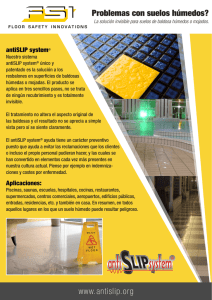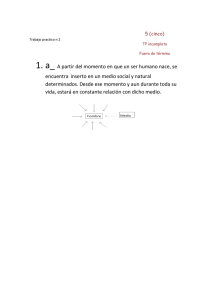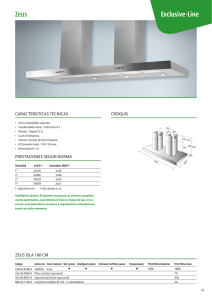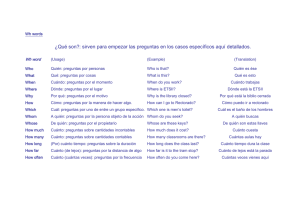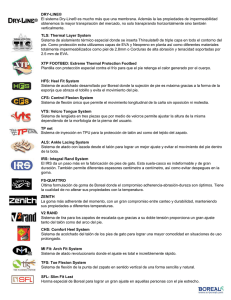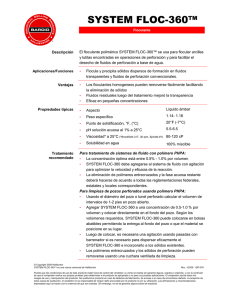Grado 12 Temario Exámenes 2016T2
Anuncio
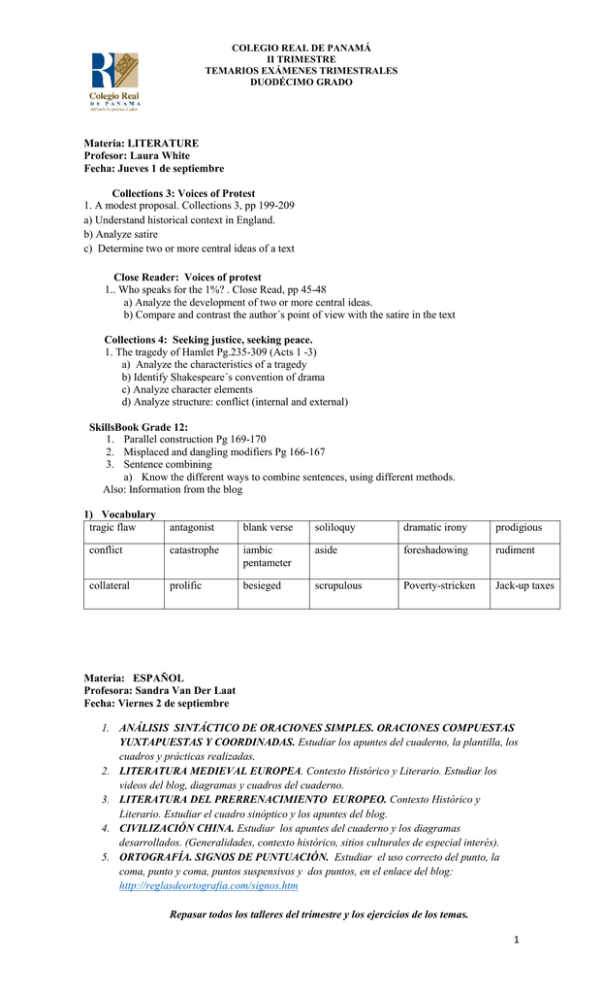
COLEGIO REAL DE PANAMÁ II TRIMESTRE TEMARIOS EXÁMENES TRIMESTRALES DUODÉCIMO GRADO Materia: LITERATURE Profesor: Laura White Fecha: Jueves 1 de septiembre Collections 3: Voices of Protest 1. A modest proposal. Collections 3, pp 199-209 a) Understand historical context in England. b) Analyze satire c) Determine two or more central ideas of a text Close Reader: Voices of protest 1.. Who speaks for the 1%? . Close Read, pp 45-48 a) Analyze the development of two or more central ideas. b) Compare and contrast the author´s point of view with the satire in the text Collections 4: Seeking justice, seeking peace. 1. The tragedy of Hamlet Pg.235-309 (Acts 1 -3) a) Analyze the characteristics of a tragedy b) Identify Shakespeare´s convention of drama c) Analyze character elements d) Analyze structure: conflict (internal and external) SkillsBook Grade 12: 1. Parallel construction Pg 169-170 2. Misplaced and dangling modifiers Pg 166-167 3. Sentence combining a) Know the different ways to combine sentences, using different methods. Also: Information from the blog 1) Vocabulary tragic flaw antagonist blank verse soliloquy dramatic irony prodigious conflict catastrophe iambic pentameter aside foreshadowing rudiment collateral prolific besieged scrupulous Poverty-stricken Jack-up taxes Materia: ESPAÑOL Profesora: Sandra Van Der Laat Fecha: Viernes 2 de septiembre 1. ANÁLISIS SINTÁCTICO DE ORACIONES SIMPLES. ORACIONES COMPUESTAS YUXTAPUESTAS Y COORDINADAS. Estudiar los apuntes del cuaderno, la plantilla, los cuadros y prácticas realizadas. 2. LITERATURA MEDIEVAL EUROPEA. Contexto Histórico y Literario. Estudiar los videos del blog, diagramas y cuadros del cuaderno. 3. LITERATURA DEL PRERRENACIMIENTO EUROPEO. Contexto Histórico y Literario. Estudiar el cuadro sinóptico y los apuntes del blog. 4. CIVILIZACIÓN CHINA. Estudiar los apuntes del cuaderno y los diagramas desarrollados. (Generalidades, contexto histórico, sitios culturales de especial interés). 5. ORTOGRAFÍA. SIGNOS DE PUNTUACIÓN. Estudiar el uso correcto del punto, la coma, punto y coma, puntos suspensivos y dos puntos, en el enlace del blog: http://reglasdeortografia.com/signos.htm Repasar todos los talleres del trimestre y los ejercicios de los temas. 1 Materia: FÍSICA Profesora: Sara Sáenz Ciro Fecha: Lunes 5 de septiembre 1. Electrostática Fuerza eléctrica (Ley de Coulomb). Campo eléctrico. Potencial eléctrico. Capacidad eléctrica. Combinación en serie y/o en paralelo. 2. Electrodinámica Resistencia eléctrica. Resistividad. Corriente eléctrica. Ley de Ohm Potencia eléctrica. Energía eléctrica * Revisar los capítulos 1,2 y 3 del texto guía. Corregir ejercicios y revisar el blog. Materia: CÁLCULO Profesora: María Inés de Castillo Fecha: Martes 6 de septiembre FUNCIONES REALES Concepto Y Dominio de una función Clases de funciones y sus gráficas Funciones algebraicas Constante Idéntica Lineal Cuadrática Racionales Irracionales Gráficas OPERACIONES CON FUNCIONES Adición y sustracción Multiplicación y división Composición de funciones LÍMITE DE FUNCIONES Concepto y definición de límite. Teoremas acerca de límite de una función. Límites de funciones algebraicas Límites de funciones trigonométricas Límites al infinito Recuerda revisar tu cuaderno, hacer las correcciones de todos sus ejercicios, trabajos en clase y práctica de repaso. 2 Materia: BIOLOGY Profesora: Maritza Moya Fecha: Miércoles 7 de septiembre Language objective: explain ideas using vocabulary words. Chapter and Section Main Objective Specific Objective Distinguish between determination and differentiation in the cell specialization process. Chapter 28. Human Systems ad Homeostasis Section: 28.1 Levels of Organization Describe how the human body is organized in different levels that work together. List levels of organization and give examples Identify how levels or organization work together in an organism. Relate stems cells role in the organization of the body. Chapter 28. Human Systems ad Homeostasis Section: 28.2 Mechanisms of Homeostasis Chap. 29. Nervous & Endocrine System Section: 29.1 How Organ Systems Communicate Chap. 29. Nervous & Endocrine System Section: Relate homeostasis to the internal environment of the body. Explain homeostasis as the regulation and maintenance of the internal environment. Differentiate between positive and negative feedback. Demonstrate how a negative feedback loop work. Predict what type of feedback the body will have depending on the situation. Summarize how the nervous and endocrine systems provide the means by which organ systems communicate. Explain how the nervous and endocrine systems help maintain homeostasis. Contrast the nervous system and endocrine system methods of communication. Describe the nervous highly specialized cells. Analyze nervous system´s most specialized cells and their function. Explain how neurons transmit and receive signals. 29.2 Neurons Chap. 29. Nervous & Endocrine System Section: Explain how senses help maintain homeostasis. Appraise how senses detect the internal and external environment. Explain how the senses detect physical and chemical stimuli. 29.3 The Senses Chap. 29. Nervous & Endocrine System Section: 29.4 Central & Peripheral Nervous System Chap. 29. Nervous & Endocrine System Section: 29.6 The Endocrine System and Hormones Analyze how the central nervous system interprets information and the peripheral nervous system gathers and transmits information. Examine how the endocrine system produces hormones that affect growth, development and homeostasis. Explain how the two parts of the nervous system work together. Describe the structure and function of the central and peripheral nervous system. Describe how hormones influence the activities of a cell. Describe the major endocrine glands and hormones they produce. Explain the role of the hypothalamus. Identify some endocrine diseases, their causes and effects. 3 Materia: QUÍMICA Profesora: Neide Freire Fecha: Jueves 8 de septiembre I- II- SOLUCIONES (cont;) a) Propiedades Coligativas de las Soluciones b) Coloides CINÉTICA QUÍMICA Y EQUILIBRIO QUÍMICO 1. Velocidad de reacciones 2. Factores que gobiernan la velocidad de reacciones 3. Reacciones reversibles y equilibrio químico 4. Principio de Le Chatelier 5. Efecto de un catalizador en un sistema 6. Expresión de la Constante de equilibrio (Keq) 7. Constante del producto de solubilidad (Kps) Apuntes en el cuaderno, fotocopias de Propiedades coligativas, blog Realquímica y libro texto, capítulo 13, pág.412 hasta 451 4
